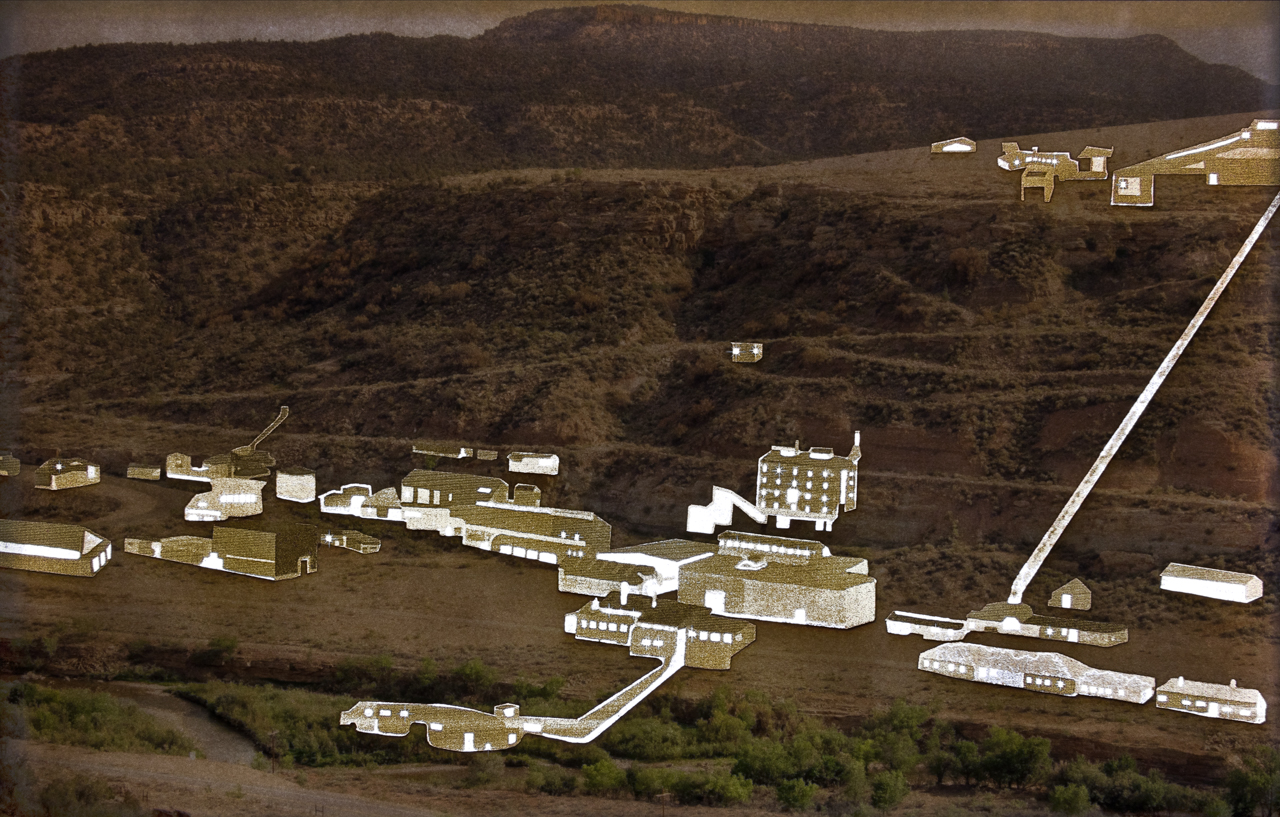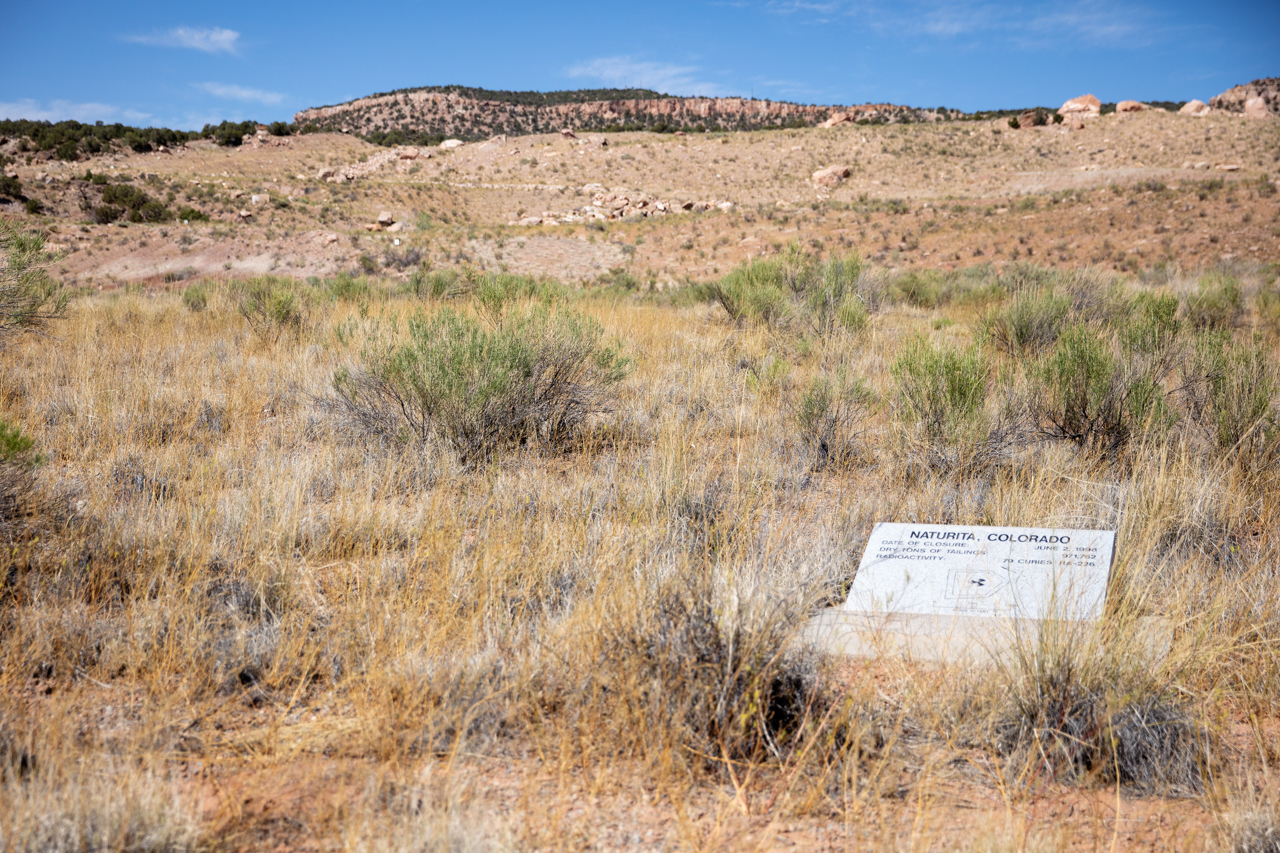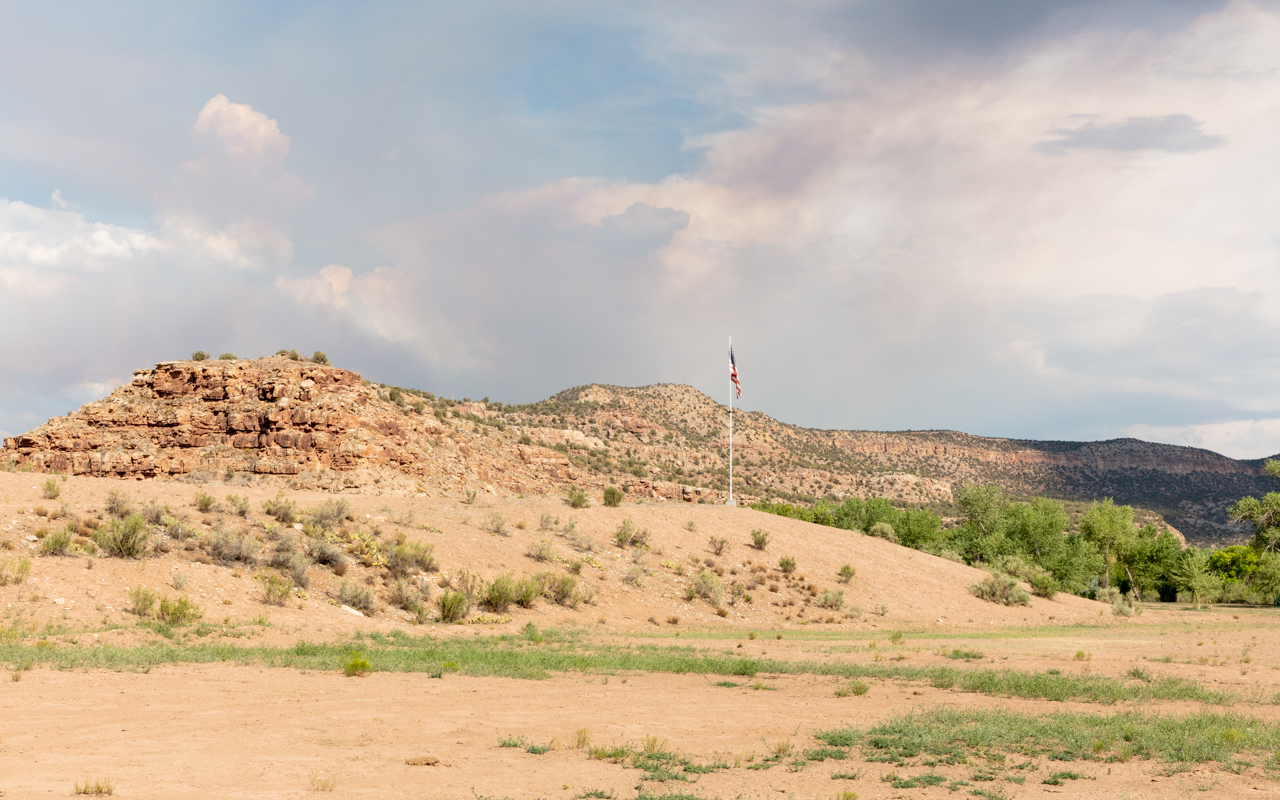Uravan
Laser-engraved archival pigment prints over clear acrylic (backlit), 2020
In western Montrose county, the town of Uravan, Colorado, can still be located on a map, however it isn’t easy to find because it is buried under layers of clay, soil, and rock. Standard Chemical Company established the town of approximately 1,000 residents in 1912, naming it after uranium and vanadium, two minerals mined in the area. Activities at the local processing mill contaminated the soil and groundwater with radioactive chemicals so much so that by 1986 the Environmental Protection Agency (EPA) closed the town and relocated residents. Uravan was shredded, burned, and buried by the EPA, creating a 680-acre Superfund site.
For Uravan, I created three-dimensional, laser-engraved pigment prints by photographing the exact locations as those in historical images of buildings that existed before the town was destroyed. Formed by the laser burning into layers of paper at various depths, the historic structures appear against bleak and empty contemporary landscapes.
Uravan

Block H

Plant A

Block G

Plant B

Tailings

Post Memory
Laser-engraved archival pigment prints over clear acrylic (backlit), 2020
In western Montrose county, the town of Uravan, Colorado, can still be located on a map, however it isn’t easy to find because it is buried under layers of clay, soil, and rock. Standard Chemical Company established the town of approximately 1,000 residents in 1912, naming it after uranium and vanadium, two minerals mined in the area. Activities at the local processing mill contaminated the soil and groundwater with radioactive chemicals so much so that by 1986 the Environmental Protection Agency (EPA) closed the town and relocated residents. Uravan was shredded, burned, and buried by the EPA, creating a 680-acre Superfund site.
For Uravan, I created three-dimensional, laser-engraved pigment prints by photographing the exact locations as those in historical images of buildings that existed before the town was destroyed. Formed by the laser burning into layers of paper at various depths, the historic structures appear against bleak and empty contemporary landscapes.